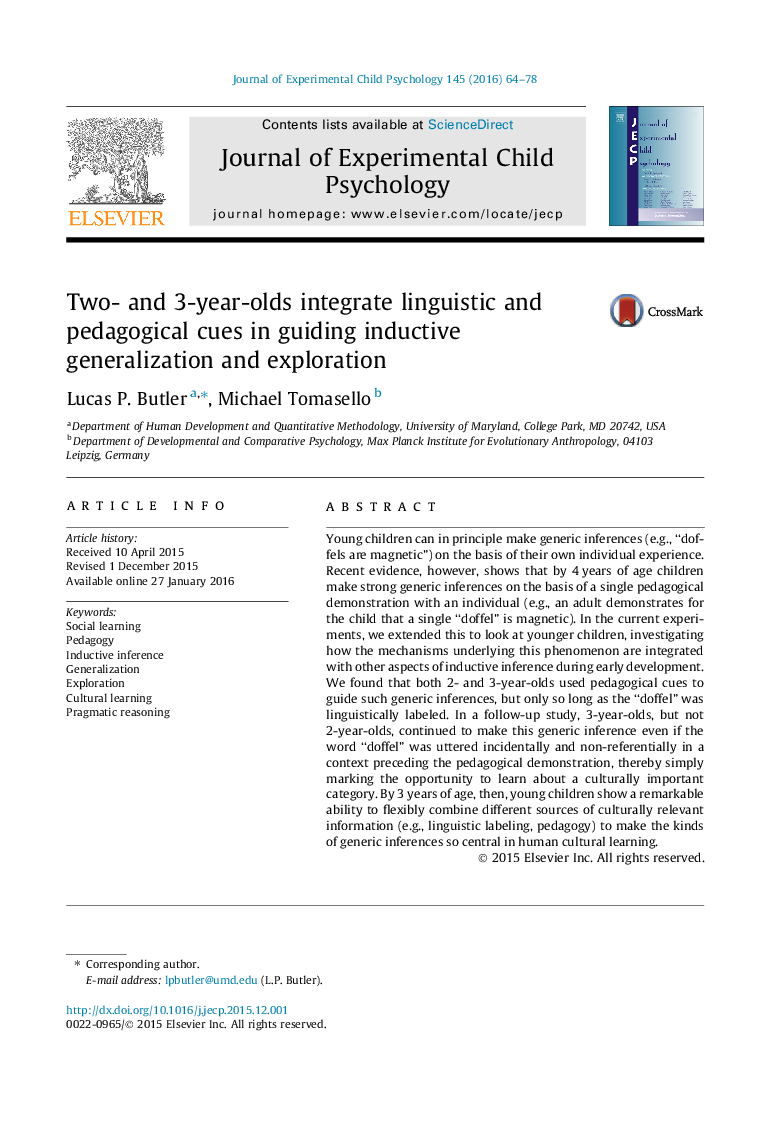| Article ID | Journal | Published Year | Pages | File Type |
|---|---|---|---|---|
| 917911 | Journal of Experimental Child Psychology | 2016 | 15 Pages |
•Making inductive generalizations from sparse evidence is critical to conceptual development.•Pedagogical cues might help children identify generalizable knowledge.•2- and 3-year-olds use linguistic cues to modulate inferences from pedagogical demonstration.•Simply hearing a label led 3-year-olds to make strong inferences from pedagogical demonstrations.•This suggests children are learning to flexibly and selectively learn from pedagogy.
Young children can in principle make generic inferences (e.g., “doffels are magnetic”) on the basis of their own individual experience. Recent evidence, however, shows that by 4 years of age children make strong generic inferences on the basis of a single pedagogical demonstration with an individual (e.g., an adult demonstrates for the child that a single “doffel” is magnetic). In the current experiments, we extended this to look at younger children, investigating how the mechanisms underlying this phenomenon are integrated with other aspects of inductive inference during early development. We found that both 2- and 3-year-olds used pedagogical cues to guide such generic inferences, but only so long as the “doffel” was linguistically labeled. In a follow-up study, 3-year-olds, but not 2-year-olds, continued to make this generic inference even if the word “doffel” was uttered incidentally and non-referentially in a context preceding the pedagogical demonstration, thereby simply marking the opportunity to learn about a culturally important category. By 3 years of age, then, young children show a remarkable ability to flexibly combine different sources of culturally relevant information (e.g., linguistic labeling, pedagogy) to make the kinds of generic inferences so central in human cultural learning.
